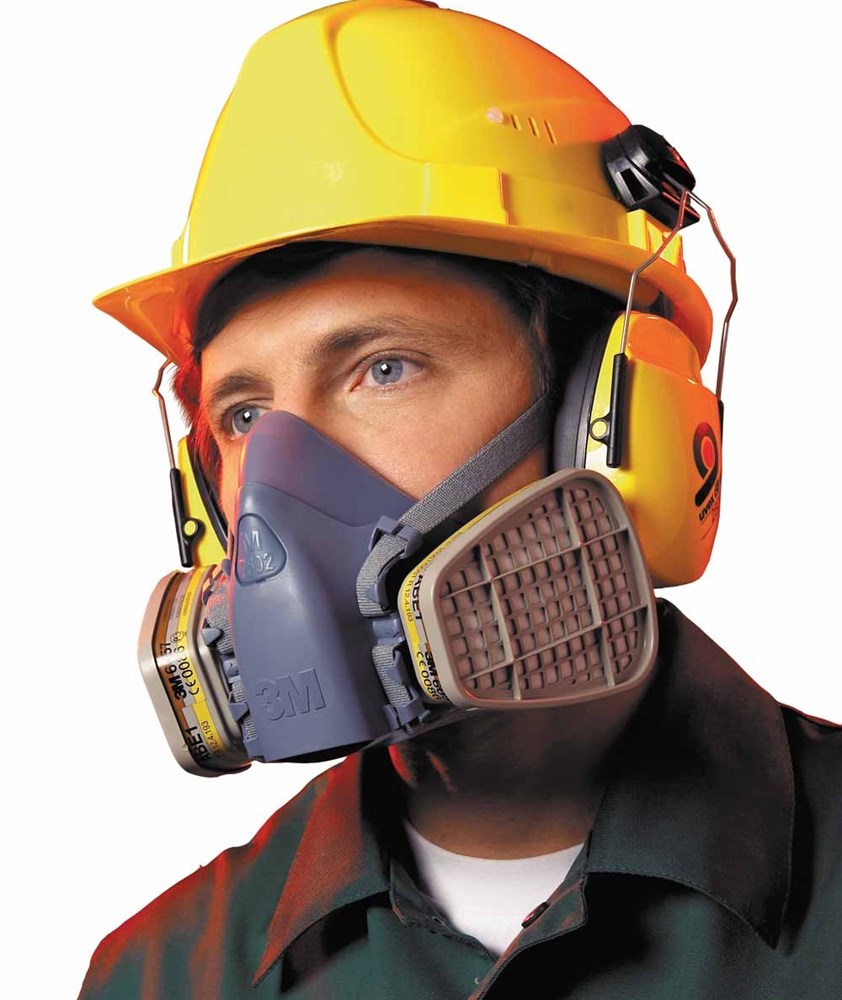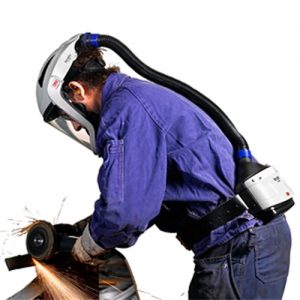Personal Protective Equipment – Respirators – Types
Respirators—Types

Explain dangers
Construction can involve airborne hazards—for instance, mist from spray-painting, fumes from welding, vapours from adhesives, and dust from concrete cutting.
Airborne hazards can have short-term effects such as sneezing or long-term effects such as lung disease.
Identify controls
Respirators are the last line of defence against airborne hazards. When we can’t isolate the hazard or use a different product, we have to wear a respirator.
There are two basic types of respirators:
1. Air-purifying respirators

2. Supplied-air respirators.

Respirators only work when they are selected, maintained, and used properly. Each respirator must be matched to the particular hazard it is designed to protect against. There is no allpurpose respirator that can be used in every situation.
Air-purifying respirators have the following features:
• Filter contaminants like dust and fibres out of the air.
• Do NOT supply air or oxygen.
• Must be matched to specific hazards such as solvent vapours or mist from sprayed form oil.
• Are specified in safety data sheets (SDSs) for controlled products.
• Have a limited lifespan based on contaminant levels and filter load. (Do NOT rely on the stated “expiry date”.)
Supplied-air respirators have the following features:
• Supply the wearer with breathable air from a compressor, cylinder, or tank.
• Offer the BEST protection against many hazards.
• Have limitations (for instance, air tanks are bulky and air lines can get tangled).
• Are the only respirators that can be used for confined space rescue or in dangerous atmospheres.
Demonstrate
Show CSA and NIOSH labels and stress that only CSA- and NIOSH-approved respirators that are appropriate for the hazard should be used.
Show examples of air-purifying and supplied-air respirators. Show how to replace filters.
Show where information on respirators can be found on a safety data sheet (SDS).
Review company rules and procedures on respirators.
For more information, visit the IHSA website.
